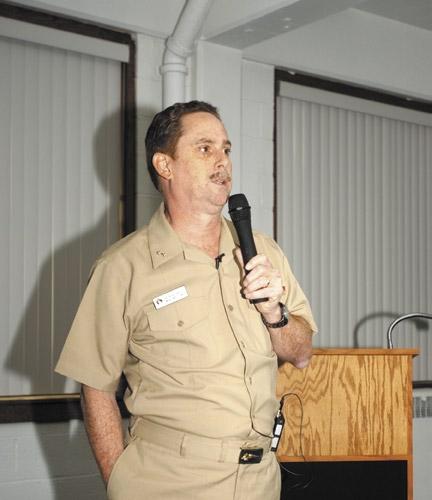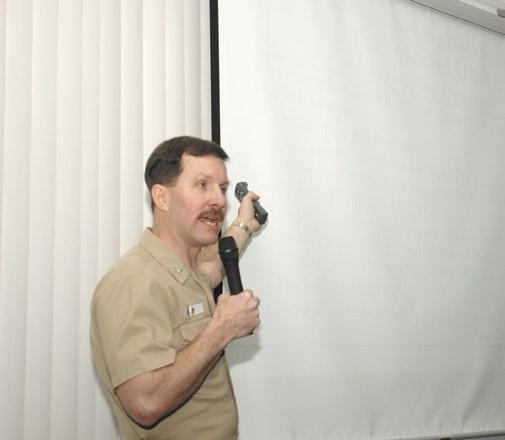
3 minute read
Fourth Annual Aviation Maintenance Safety Conference Brings Leaders Together
The 4th Aviation Maintenance Safety Conference was held at Naval Station Norfolk, April 18 to 21. Its purpose was to promote safety awareness and better inform the fleet of Operational Risk Management (ORM) tools.
Rear Adm. George Mayer, commander, Naval Safety Center (NSC), kicked off the conference, and Capt. Ken Neubauer, head of the NSC aviation safety directorate, followed the admiral’s speech.
Advertisement
“It’s vital to have conferences such as these where we gather leadership to share ideas so the best information can be distributed to the fleet,” said Neubauer. “Risk management is a vital part of our job, and hazards bring with them a certain amount of risks. Therefore, it is important to manage risks brought to us.”
Neubauer said there are many programs in place to help minimize mishaps and that leadership training is one of them.
“Leadership is one tool the Navy uses to apply ORM,” said Neubauer. “By leaders demanding that safety is a must and teaching our Sailors how to use safety techniques, we can minimize the amount of mishaps in the fleet by a large percentage.”
ASCS(AW) Phil Lecroy, a maintenance analyst with NSC and an instructor for the safety conference, said it’s not only unsafe actions in the fleet that kill, but not practicing safety outside of the military work space can kill, as well.
Lecroy, a victim of a 1980 drunk-driving accident, said he uses his past experiences to help educate Sailors on how safety plays a role in our everyday lives.
“My best friend and I were driving to Nulichucky River, Tenn., when we were struck by a drunk driver,” said Lecroy. “Because of the hard impact and me not wearing my seatbelt, I don’t remember much of the accident. But the loss of my best friend and seeing the damage to my face and






RADM George Mayer, Commander Naval Safety Center
More than 200 maintainers and safety professionals attended the conference.

Capt. Ken Neubauer, Head of Aviation Safety Naval Safety Center






By JO2 Maja Dyson

neck reminds me of the importance of safety every day.”
AMC(AW) Paul Hofstad, an airframes analyst for NSC, said the turnout for the conference was great and just what the center expected.
“It’s highly important to hold a four-day conference, because there is so much information to put out on aviation safety,” said Hofstad. “The first day includes the supportive lectures; second day includes lectures about things that cause the highest mortality rates; third day are the surveyor’s input; and that fourth day is the validation day. The more you get the word out, the better.”
Hofstad said the center wants to see the participants go back to their commands and share everything they’ve learned.
“Mission readiness is paramount; safety is a byproduct of a good readiness plan,” said Hofstad.
LCdr. Bert Ortiz, an Aviation Safety Maintenance officer at NSC, said, “These conferences are not only good to educate, but they are also good to get different ideas on ways to improve safety and make things at each command better. We were able to bring in representatives from all over the world, including Japan and Guam, to help learn about different techniques they use at their commands.” Ortiz also said, “If Sailors learn how to employ ORM in everything they do and listen to their senior personnel, who have a vast amount of experience with safety management, we will not only reduce safety mishaps but save lives.” For more information on the maintenance-safety conference, survey schedules, or for information about maintenance safety in general, visit the Naval Safety Center website at www.safetycenter .navy.mil/aviation/maintenance.
Photos by Dan Steber
Petty Officer Dyson works at the Fleet Public Affairs Center, Atlantic.










